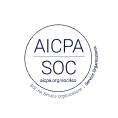
What is the purpose of user testing?

Note: In this resource, “user testing” refers to the general process, while UserTesting signifies our organization and platform.
The benefits of user testing are plentiful, from uncovering customers’ needs and challenges to designing better solutions, making faster decisions, and encouraging a customer-first approach, to name a few. If you want to understand why user testing is important, think of it this way: no matter your organization’s size or department, prioritizing user testing will pave the way for building products your customers will love while maximizing productivity.
Why is user testing important for product and engineering teams?
“User testing is a tool, just like automated tests or continuous deployment. And like any other tool that your team invests in, it takes time,” says Edmond Lau, author of The Effective Engineer and previous software engineer at Quip. He continues, “Many product and engineering teams ignore user testing because the time spent conducting and learning from user tests is time not spent writing software.”
Considering the time and effort spent perfecting details and features with the goal of high adoption, more can be done to build more effective products. By testing early and often, you’re preserving your efforts and building toward greater impact.
If you prioritize user testing and, specifically continuous user testing, you’re helping your teams "more rapidly and incrementally iterate toward the right product to ship,” says Lau.
What are some of the benefits of user testing when prioritizing features and making product decisions?
1. The most important internal benefit is a quicker iteration cycle. Teams can iterate faster and more incrementally than a traditional build-and-launch method or A/B tests. Continuous user testing provides a powerful avenue to build confidence that you’re headed in the right direction, which saves you from costly rework later on. “Driving a product forward based on vision and intuition is important, but we’re oftentimes so immersed in our mental models of how something works that we can become fairly disconnected from someone less familiar with the product,” Lau says. “Gathering feedback from real users helps ground our reality.”
2. The persuasiveness of data from real users helps resolve internal discussions and offers validation. “How often have we spent hours in design discussions over the hypothetical benefits of various approaches, only to move forward based on some line of argument that doesn’t necessarily have everyone’s buy-in,” Lau continues.
He concludes, “We often spend our energy debating because we don’t have enough data, and continuous user testing gives us another tool to collect that data. And that means we can focus on results and ship what actually works rather than what hypothetically works.”
3. A human-centered approach offers a greater ROI, from increased revenue and conversion rates to customer retention. Investing time and resources into UX will also help you create brand advocates—loyal users who not only use your product but sing your praises to their friends, family, and colleagues.
4. Besides increasing your revenue, user testing reduces costs, including development and customer support fees. QA testing alone may not be enough to discover that the feature that took months in the making isn’t actually prioritized by users, or that the previously existing navigation design is preferred over the new design by customers.
Your developers and customer support team’s time is extremely valuable. And you can save hundreds of hours and thousands of dollars by doing UX research before you start building and throughout your development cycle. Incorporating automated UX testing in a thoughtful way can accelerate the pace of your UX research insights even more.
5. User testing also allows you to pinpoint customers’ pain points and receive an unbiased opinion. To design user-friendly experiences, you need to understand your customers. And the sooner you realize that how your product appears to them may not align with what you see, the sooner you can cut out blind spots and improve their experience.

Mitigating risk resources
Bring customer perspectives into more decisions across teams and experiences to design, develop, and deliver products with more confidence and less risk.





